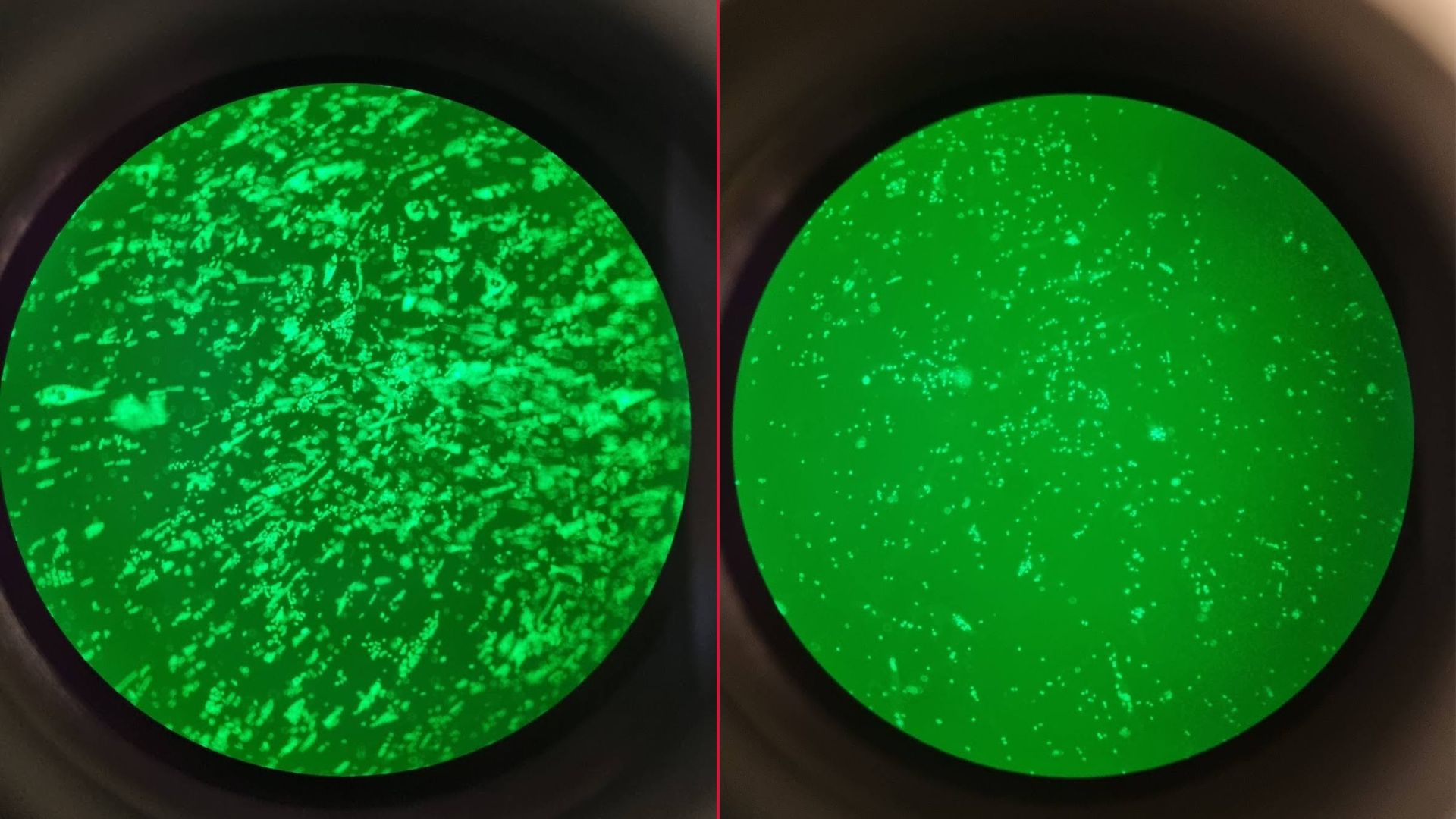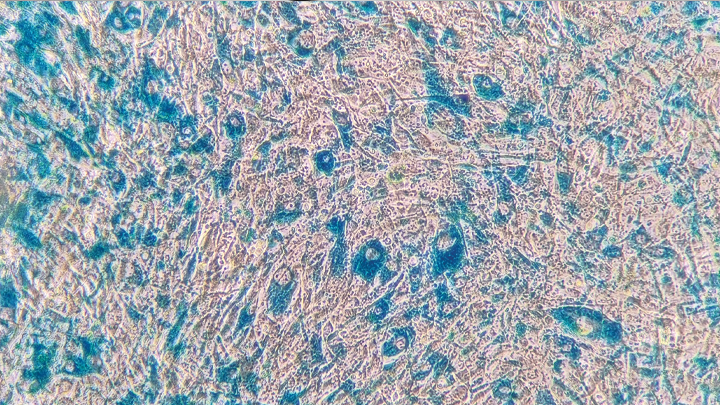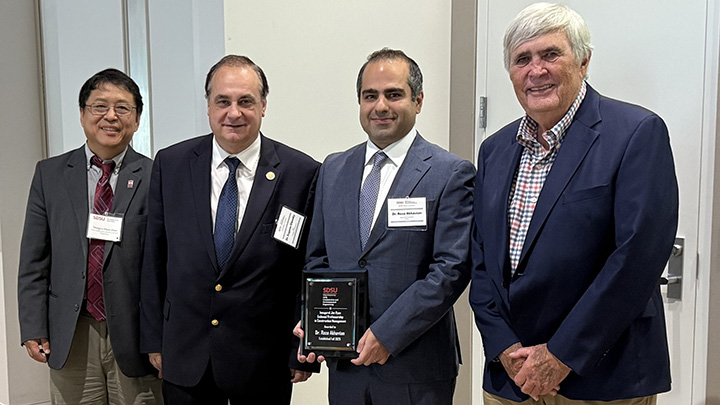Monsters inside cells could help explain treatment failure and improve drug development
SDSU scientists use parasites to explore a scarcely studied phenomenon that may render drugs useless against infections

An infection transmitted by vampire bugs, a disease that attacks the heart, and glowing green microscopic parasites. These eerie elements are all part of a project led by San Diego State University associate professor Laura-Isobel McCall which tests a new theory on why treatments fail to cure a range of diseases.
Getting sick can be scary and what’s even more frightening is when treatments don’t work. A key culprit behind treatment failure is antimicrobial resistance, a huge issue in health care today which occurs when microbes have built up an immunity to the drugs used to treat them.
McCall’s lab argues there may be another factor working alongside antimicrobial resistance to prevent drugs from killing pathogens: Drugs may not be getting to the right location in the first place. Researchers have explored this idea in cancer studies but this project represents one of the few, if only, focused on infectious diseases.
Through a collaboration between McCall’s lab at SDSU, Zhibo Yang at the University of Oklahoma, James Papin at the University of Oklahoma Health Sciences Center and Carolyn Ibberson at the University of Tennessee in Knoxville, this NIH-funded project aims to determine how drug levels in cells could lead to treatment failure in essentially each category of infection.
McCall’s lab will test the theory first in a parasitic infection model, before Papin and Ibberson’s labs test it in viral and bacterial infections, respectively. The Yang lab will perform single-mass spectrometry to quantify drug levels in these biological systems.
A Tricky-to-Treat Disease
Second year chemistry-biochemistry doctoral student Luis Ernst pulls up racks of frozen T. cruzi parasite samples from an ultracold liquid nitrogen tank (Bryana Quintana/SDSU)
For their part of the project, McCall’s lab is using the parasite Trypanosoma cruzi, which causes Chagas disease and is primarily spread through the bloodsucking triatomine bug. Once T. cruzi has invaded cells, the disease progresses to attack the heart and gut.
Chagas disease affects an estimated six to seven million people worldwide, particularly impoverished populations with low access to health care in Latin America and the southern United States. While treatments are available, they can have severe side effects. Making matters worse is the fact that although the disease must be treated early to ensure optimal outcomes, people are often asymptomatic at the start which makes it difficult to diagnose and treat.
“Essentially 20% of people who take Chagas disease medication are not able to finish their treatment because the side effects are so intense,” first-year chemistry doctoral student Ariel Pernela said. “And they have to take it for a long time, up to two months, so these medications are not ideal.”
McCall’s lab hopes to use this disease as a way to better understand how drug levels in cells impact treatment efficacy. To do this, they will grow cell samples in the lab, infect them with T. cruzi parasites, then administer the treatments and examine how they affect each cell before sending the samples to Yang’s lab to measure drug levels in the cells.
“The parasites are fluorescent so we can locate them. When we start the treatment, you can see that the fluorescence goes down when the parasite dies and then we can see in which cells parasites persist because we have a fluorescent signal,” said Luis Ernst, a second-year chemistry doctoral student. “Then we can compare how much of the drug was in the cell in which parasites were killed and how much of the drug was in the cell in which parasites persist.”
The researchers predict higher levels of drugs in cells with fewer parasites, indicating the medication entered these cells and worked as intended, whereas treated cells that still contain parasites will show lower drug levels, meaning not enough medication got inside the cell to be effective.
Upgrading Treatment
 Open the image full screen.
Open the image full screen.
McCall said if her team’s hypothesis is correct, it “could change how we do drug development.”
Testing drug levels in each cell could prove a key, time- and money-saving step in verifying drug efficacy prior to clinical trials, not to mention one which makes testing safer. This research could also elucidate a need to alter drug formulas, or adjust factors like dosage or length of treatment to make medications more effective.
Drug delivery issues also have the potential to increase antimicrobial resistance, McCall explains. If a cell contains low drug levels, pathogens are able to survive and learn how to defend against the drug. The opposite could also be true, as pathogens can pump drugs out of the cell and encourage cells they infect to do the same, which contributes to resistance. So, this study could provide further insight into ways to curb this widespread issue.
“Treatment is at the center of health. Prevention is extremely important but you are going to get sick, hopefully very rarely, and when you do, you want treatments that are going to work,” McCall said. “This research is part of making those good treatments, understanding what we have now and always evolving to make better ones, so you don't have a situation where people can't be treated or they get something that doesn't work for them.”



